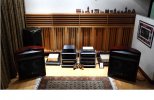Hello everyone, I am from China; please accept my sincere greetings.
I am considering acquiring a pair of HIFI speakers as the left and right main speakers for my home theatre and need an excellent off-axis response to ensure sound articulation from the front.
The JBL 66000, KEF blade one meta, and beolab 50 are similar in price in China, and all three seem to offer good off-axis response with their waveguide design.
I checked some relevant reviews on the internet, and only the dd66000 has credible, appropriate measurements; the other two I have auditioned, but given the different acoustic environment of the room, I don't trust my ears.
JBL seems to have the best speaker units and cabinet design, but the model is perhaps too old. The Blade has the latest UniQ technology and appears to be a good choice. beolab50 has plenty of power at 2100w and comes with its DSP technology
My English is not very good, and I hope you don't mind that some of the technical words may be poorly expressed.
I am considering acquiring a pair of HIFI speakers as the left and right main speakers for my home theatre and need an excellent off-axis response to ensure sound articulation from the front.
The JBL 66000, KEF blade one meta, and beolab 50 are similar in price in China, and all three seem to offer good off-axis response with their waveguide design.
I checked some relevant reviews on the internet, and only the dd66000 has credible, appropriate measurements; the other two I have auditioned, but given the different acoustic environment of the room, I don't trust my ears.
JBL seems to have the best speaker units and cabinet design, but the model is perhaps too old. The Blade has the latest UniQ technology and appears to be a good choice. beolab50 has plenty of power at 2100w and comes with its DSP technology
My English is not very good, and I hope you don't mind that some of the technical words may be poorly expressed.



